-
Posts
12430 -
Joined
-
Last visited
-
Days Won
554
Content Type
Profiles
Forums
Events
Everything posted by Fiery
-
Yes it does.
-
Razer very quickly responded the following: "You can press and hold the Razer Home key until the Razer Task Manager appears. It should show all the running apps including yours (assumming you did not close it when you receive the de-activate). You can scroll until you find your app's last screen, then simply tap on it. When you're app gets published in Synapse and the user assigned it to a dynamic key, the user can simply go back to Razer Home and press that dynamic key. Your app would get re-activated." We'll work on getting AIDA64 published on Synapse
-
1) CPU Package Power: Make sure to upgrade to the latest beta version of AIDA64 Extreme available at: http://www.aida64.com/downloads/aida64extremebuild2631xjbvz0sn9czip After upgrading to this new version, make sure to restart Windows to finalize the upgrade. If the problem persists, then please right-click on the bottom status bar of AIDA64 main window --> CPU Debug --> CPUID & MSR Dump. Send us the file as an attachment or copy-paste the full dump into a forum post. 2) Vcore: After upgrading to the beta release I've linked above, make sure to verify Vcore against Gigabyte's EasyTune utility, at both idle and under full CPU load. If the values do not match, then please let me know both values (AIDA64 Vcore reading, EasyTune Vcore reading) at both states (idle, full load). 3) OCZ: After upgrading to the beta release I've linked above, please right-click on the bottom status bar of AIDA64 main window --> Disk Debug --> ATA Dump. Send us the file as an attachment or copy-paste the full dump into a forum post. Thanks, Fiery
-
Thank you for the feedback. I'm afraid the current Razer SDK doesn't implement a facility to handle such application switching. Or at least we cannot find any API calls to get back control over the LCD after you've switched to another application. We'll ask Razer about this, there must be a solution.
-
Yes, it's normal. For whatever reason, via its DirectX Diagnostics API both Windows 8 and Windows 8.1 simply reports DirectX 11, without the rest of the version details. Regards, Fiery
-
Please upgrade to the latest beta version of AIDA64 Extreme available at: http://www.aida64.com/downloads/aida64extremebuild2631xjbvz0sn9czip After upgrading to this new version, make sure to restart Windows to finalize the upgrade. If the problem comes up again, then please close AIDA64, start it again, and right-click on the bottom status bar of AIDA64 main window --> Sensor Debug --> Sensor Profiling Dump. Copy-paste the full results into this topic. Thanks, Fiery
-
Thank you, we'll fix it in the next AIDA64 beta release due in a few days from now. I'll let you know in this topic once the new AIDA64 beta is ready for download.
-

fixed: Asus Z87 CPU Cache Voltage Sensor Misread/Mislabel?
Fiery replied to ormuz001392's topic in Bug reports
Thank you, we'll fix it in the next AIDA64 beta release due in a few days from now. I'll let you know in this topic once the new AIDA64 beta is ready for download. -
Thank you, we'll fix it in the next AIDA64 beta release due in a few days from now. I'll let you know in this topic once the new AIDA64 beta is ready for download.
-

Incorrect Motherboard temperature (ASRock 990FX Extreme9)
Fiery replied to Chris635's topic in Hardware monitoring
We've checked, and AIDA64 uses the same sensor register to measure the motherboard temperature as ASRock XTU does. Do you mean you have an issue configuring an offset for the motherboard temperature? If yes, then please create a screen shot showing what do you try to configure in AIDA64 / main menu / File / Preferences / Hardware Monitoring / Correction. Thanks, Fiery -

fixed: Duplicate HDD temperatures with AIDA64 v3.20.2622 Beta
Fiery replied to pbcopter's topic in Bug reports
Sounds great, thank you for the feedback! -

G19 update frequency - Not the usual question
Fiery replied to .Griff.'s topic in General Discussion
No, it only affects the G19. The G15/G510 have a monochrome LCD with a lower resolution, so rendering is much less of an issue there, and much less CPU time is spent on rendering, fortunately. -

fixed: Duplicate HDD temperatures with AIDA64 v3.20.2622 Beta
Fiery replied to pbcopter's topic in Bug reports
Please upgrade to the latest beta version of AIDA64 Extreme available at: http://www.aida64.com/downloads/aida64extremebuild2631xjbvz0sn9czip After upgrading to this new version, make sure to restart Windows to finalize the upgrade. Let me know how it works on your system. Thanks, Fiery -
Since the latest beta release, we've identified more issues about the RAID enumeration and RAID SMART module of AIDA64, so we've had to completely revamp the mentioned module to improve its compatibility with modern RAID controllers. If it's possible, please upgrade to the latest beta version of AIDA64 Extreme available at: http://www.aida64.com/downloads/aida64extremebuild2631xjbvz0sn9czip After upgrading to this new version, make sure to restart Windows to finalize the upgrade. Please let me know if it still works fine on your system.
-

G19 update frequency - Not the usual question
Fiery replied to .Griff.'s topic in General Discussion
Please upgrade to the latest beta version of AIDA64 Extreme available at: http://www.aida64.com/downloads/aida64extremebuild2631xjbvz0sn9czip After upgrading to this new version, make sure to restart Windows to finalize the upgrade. You can issue the Sensor Profiling dump by right-clicking on the bottom status bar of AIDA64 main window --> Sensor Debug --> Sensor Profiling Dump. Copy-paste the full results into this topic. Please note that besides the profiling feature, this new AIDA64 beta also implements an optimized rendering solution for G19, which should lead to lower CPU utilization when the LCD feature is enabled in AIDA64. It may help about your system, but maybe there are other issues that the Sensor Profiling could reveal. Thanks, Fiery -
Please upgrade to the latest beta version of AIDA64 Extreme available at: http://www.aida64.com/downloads/aida64extremebuild2631xjbvz0sn9czip After upgrading to this new version, make sure to restart Windows to finalize the upgrade. You can enable Razer SwitchBlade LCD support in AIDA64 / main menu / File / Preferences / Hardware Monitoring / LCD. Once it is enabled, the Preferences window will automatically be resized to accomodate the 800x480 pixel LCD preview area. You can then configure the LCD layout similarly to how SensorPanel and Logitech LCD configuration works. You can use the first 4 Dynamic Keys to switch between the 4 pages of the LCD. You can use Dynamic Key #5 to go to open the LCD configuration panel (AIDA64 / main menu / File / Preferences / Hardware Monitoring / LCD Items). One thing that doesn't seem to work is putting images under the dynamic keys. We suspect it is due to a bug in the SwitchBlade SDK. We've asked Razer through their forum about this, and will push them to fix it up if it is indeed a SDK bug. Let me know how it works on your system
-
Thank you, but it's not what we need to implement sensor adjustments for your motherboard. You need to right-click on the bottom status bar of AIDA64 main window --> Sensor Debug --> ISA Sensor Dump. Copy-paste the full results into this topic. Thanks, Fiery
-
Please right-click on the bottom status bar of AIDA64 main window --> Sensor Debug --> ISA Sensor Dump. Copy-paste the full results into this topic. Thanks, Fiery
-

Cache & Memory Benchmark shows completely different results
Fiery replied to asard's topic in General Discussion
Please refer to the following forum topic: http://forums.aida64.com/topic/1326-new-cache-and-memory-benchmarks-in-aida64-v300/ Regards, Fiery -
I'm sorry for the delays. We're getting close to finalizing the Razer SwitchBlade LCD support for AIDA64. As soon as it gets ready (should happen in cca. 1 or 2 weeks from now), I'll post a download link to a new AIDA64 beta release into this topic. Stay tuned
-

G19 update frequency - Not the usual question
Fiery replied to .Griff.'s topic in General Discussion
Thank you for your reply, and I'm sorry for the delays. It took us a few days to implement a profiling feature in the hardware monitoring module of AIDA64. We're hoping that by using the profiling output, we can identify the particular part of that module that causes the slowness in sensors measurement on your system. Once the profiling feature is finalized, we'll release a new AIDA64 beta update, and I'll post a download link into this topic with instructions on how to issue the Sensor Profiling dump. It should take no more than 2-3 days to get there. -
Core temperature values and motherboard temperature seem to match the other data you quoted above. CPU temperature is different, because the values weren't measured in the same time. CPU temperature can change quickly 5 to 10 Celsius, depending on the actual CPU load (utilization). GPU diode temperatures and HDD temperature are very close, they are just due to rounding difference and due to measuring point (time) difference. GPU VRM temperature also matches Phase1 temperature.
-
Haswell runs very hot under heavy load, that's normal. In case your CPU is overclocked over 4 GHz, and reaches 84 Celsius, that is considered a good result. Even at stock speed (no overclock) Haswell could heat up to over 95 Celsius under heavy load As for the 4th core temperature: the cores of Haswell are very tiny, so the cores are usually run at the same temperature. The difference may be caused by Intel DTS (on-die temperature measurement solution) measurement anomalies. Please note that DTS was originally designed to prevent overheating, and it was only accurate when the CPU got very close to its TJMax limit temperature. The DTS technology evolved a lot in the past few years, but it may still not be 100% accurate. Regards, Fiery
-
Just make sure to put more pressure on the Mad Catz guys. Judging by the comments, it seems there's quite a demand for a SDK: http://madcatz.com/strike7-destroy/ I'm sure eventually they will release a SDK for the Strike 7.

